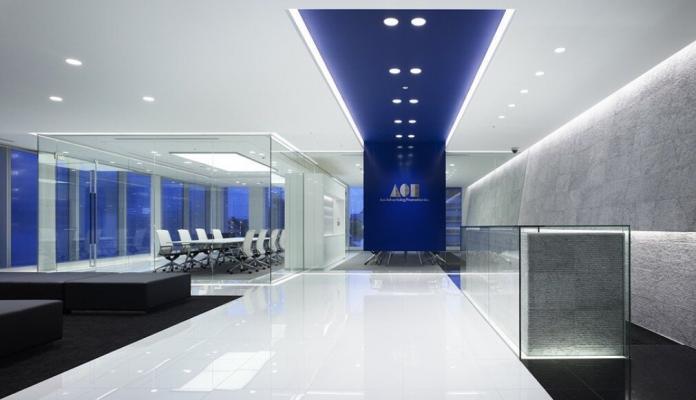Light-emitting diodes, commonly known as LEDs are undoubtedly the best lighting technology available in the world. It holds the upper hand on all conventional lighting solutions including incandescent bulbs, compact fluorescent lights, halogen, HID, etc. on almost all fronts, and has thrived in the ultra-modern 21st century.
Governments around the world are encouraging the use of LED lighting solutions in almost all commercial sectors to reduce their energy consumption and safeguard precious natural resources. For instance, the Government of India has distributed nearly 370 million LED luminaires under its UJALA program to date. This has helped the country to save more than 47,500 mn kWh of energy per year.
LED lighting fixtures and LED luminaires are loaded with multiple benefits that have helped them to gain much-deserved popularity in a host of commercial spaces. Some of them include:
- LEDs are highly efficient
First and foremost, LED lighting solutions are the most efficient lighting solutions available today. They use considerably less energy than all their traditional counterparts and help the business achieve its energy efficiency goals. For instance, LED lights are almost 80% more efficient than incandescent and fluorescent lights. They encourage comprehensive use of energy by converting 95% of the electricity into illumination and wasting merely 5% as heat.
- LEDs are durable
LED lights are one of the most durable commercial lighting solutions available in the market. They offer a long service life and can remain functional for about 50,000 hours. This is significantly higher than CFLs and incandescent bulbs which offer a service life of about 8,000 hours and 750 hours respectively. They free the user from the hassles of replacing lights from time to time and allow them to save a lot on maintenance bills. Reduced maintenance bills and energy bills collectively aid a company in ensuring massive amounts of savings, making LED lighting a highly cost-effective lighting solution.
Interestingly, LED lighting solutions from leading LED lighting manufacturers like Wipro Lighting boast robust build and IP ratings. This makes them highly appropriate even for challenging commercial spaces like shipyards, warehouses, and industries.
- LEDs are environment-friendly and sustainable
Sustainability and eco-friendliness are the two most dominant forces that have skyrocketed the success of LED lighting solutions in the 21st century. Unlike compact fluorescent lights that have mercury, LED lights are completely free from any harmful compounds. Moreover, they don’t emit any Ultraviolet (UV) radiation and ensure significantly low IR radiations to protect users and the environment.
- LEDs ensure the best illumination
LED-based lighting solutions ensure the best possible illumination in indoor, as well as outdoor environments. They are available in various color temperatures to suit the needs and requirements of space and offer the best color rendering capabilities. They ensure uniform illumination and proper levels of brightness throughout the space. They don’t produce glare and complement human health. They safeguard the employees from a variety of mental or physical discomforts such as eye strains, headaches, and migrations.
The above-mentioned benefits have influenced a host of commercial sector verticals to lay their reliance on new-age LED lighting solutions. Be it healthcare, educational facilities, retail, or industries, LEDs have paved the way for all to thrive in the 21st century.
10 amazing things you did not know about LED lights
LED (Light Emitting Diode) lights have become increasingly popular due to their energy efficiency and longevity. Here are 10 amazing things you may not know about LED lights:
- Energy Efficiency:
- Fact: LED lights are highly energy-efficient. They use up to 80% less energy than traditional incandescent bulbs, contributing to significant energy savings and reduced electricity bills.
- Long Lifespan:
- Fact: LEDs have an exceptionally long lifespan compared to traditional bulbs. They can last up to 25,000 hours or more, reducing the frequency of replacements and maintenance.
- Instant Illumination:
- Fact: Unlike some other types of lighting, LEDs light up instantly without the need for warm-up time. This makes them ideal for applications where immediate illumination is crucial.
- Cooler Operation:
- Fact: LEDs emit very little heat in comparison to incandescent bulbs, which release 90% of their energy as heat. This makes LEDs safer to touch and reduces the risk of fire hazards.
- Compact Size and Design:
- Fact: LEDs are compact and can be designed into various shapes and sizes. This flexibility allows for innovative lighting designs and applications, including flexible LED strips and intricate lighting fixtures.
- Color Range:
- Fact: LEDs are available in a wide range of colors without the need for filters. This is because the color of the light is determined by the specific materials used to produce the LED.
- Directional Light Emission:
- Fact: LEDs emit light in a specific direction, making them more efficient for certain applications. This is in contrast to traditional bulbs that emit light in all directions, requiring reflectors to direct the light where it’s needed.
- Environmentally Friendly:
- Fact: LEDs are considered environmentally friendly. They do not contain hazardous materials like mercury, and their energy efficiency reduces carbon emissions associated with electricity production.
- Dimmability:
- Fact: Many LEDs are dimmable, providing greater control over the level of light in a space. This feature enhances energy savings and allows for customization of the lighting environment.
- Resilience to Switching:
- Fact: Unlike some types of lighting, frequent switching on and off does not significantly impact the lifespan of LEDs. This makes them suitable for applications where lights are frequently turned on and off.
- Smart Lighting Integration:
- Fact: LEDs can be easily integrated into smart lighting systems, allowing for remote control, automation, and dynamic color changes. This adds a layer of convenience and customization to home and commercial lighting.
- UV and Infrared-Free Light:
- Fact: LEDs emit light in the visible spectrum without producing significant amounts of ultraviolet (UV) or infrared (IR) radiation. This is beneficial for applications where UV or IR emissions can be harmful, such as in museums or art galleries.
LED technology continues to evolve, and ongoing advancements contribute to even more innovative and energy-efficient lighting solutions across various industries.
You may also like,








